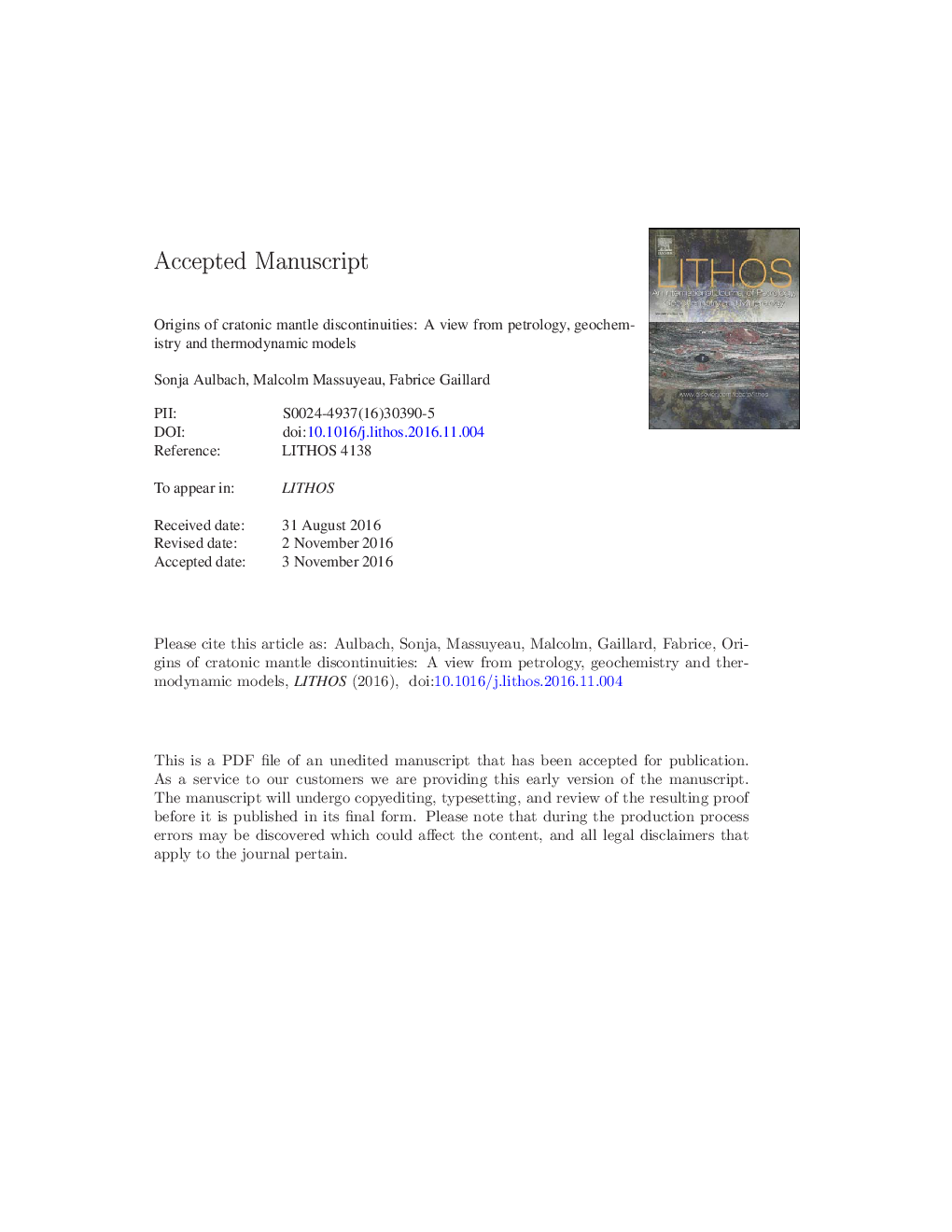| Article ID | Journal | Published Year | Pages | File Type |
|---|---|---|---|---|
| 5784331 | Lithos | 2017 | 74 Pages |
Abstract
Since intact cratons are presently tectonomagmatically quiescent, and since MLDs produce both positive and negative velocity gradients, in some cases with anisotropy, most MLDs may be best explained by accumulations (metasomes) of seismically slow minerals (pyroxenes, phlogopite, amphibole, carbonates) deposited during past magmatic-metasomatic activity, or fabric inherited from cratonisation. They may accumulate as layers at, or as subvertical veins above, the depth at which melt flow transitions from pervasive to focussed flow at the mechanical boundary layer, causing azimuthal and radial anisotropy. Thermodynamic calculations investigating the depth range in which small-volume melts can be produced relative to the field of phlogopite stability and the presence of MLDs show that phlogopite precipitates at various pressures as a function of age-dependent thermal state of the cratonic mantle, thus explaining variable MLD depths. Even if not directly observed, such metasomes have been shown to be important ingredients in small-volume volatile-rich melts typically penetrating cratonic lithospheres. The apparent sparseness of evidence for phlogopite-rich assemblages in the mantle xenolith record at geophysically imaged MLD depths, if not due to preferential disaggregation in the kimberlite or alteration, may relate to vagaries of both kimberlite and human sampling.
Keywords
Related Topics
Physical Sciences and Engineering
Earth and Planetary Sciences
Geochemistry and Petrology
Authors
Sonja Aulbach, Malcolm Massuyeau, Fabrice Gaillard,
